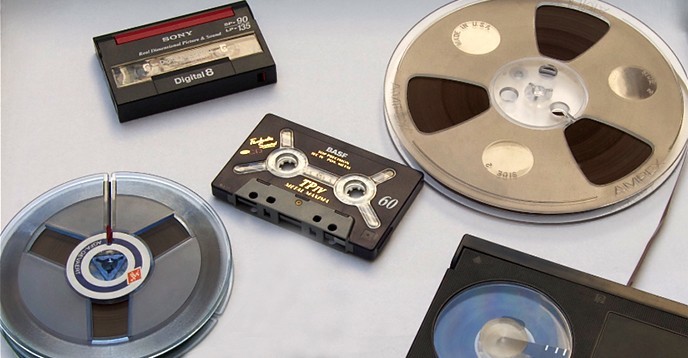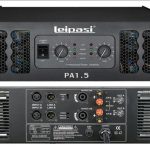We studied about the principle of operation of magnetic tape recorders and their construction and working in previous articles. We also saw that there are several types of recording methods which are used in magnetic tape recorders. In this article we will take a look at all the four methods one by one including the techniques which emulate a digital tape recorder and uses digital signals to be stored on the tape and played back when required.
Direct Recording
If the signals are recorded in an analog manner in a way so that the amplitude and frequency of the signal is recorded linearly as a variation of the amplitude and magnetization and wavelength on the magnetic tape, such a system of recording is known as direct recording. Since low distortion is required on the playback signal, this is achieved by adding a high frequency AC bias signal to the signal being recorded.
This method of recording is most suited for audio signals rather than any other purpose. This is so because the human ear has an inbuilt mechanism which averages the amplitude variation errors.
FM Recording
We have learnt about frequency modulation in a previous article and know that frequency modulation is all about using a sine wave carrier signal and modulating or modifying it as per the signal to be loaded on that carrier signal. Similarly in case of FM recording in magnetic tapes, a frequency modulator is used to feed the input signal onto the carrier signal. This signal is then recorded onto the magnetic tape either with or without the ac-bias signal as described in the previous section of direct recording.
The sketch below shows a simplified view of such a recording system without showing the internal details. As you can see, when the signal is now reproduced using the playback head, it needs to be passed through a demodulator which separates the sine carrier wave from the recorded signal and then reproduced.
This system is more complicated in its construction and expensive to built because of the various extra circuitries involved in it. Hence normally it is only used in situations where amplitude variation errors are not acceptable, such as instrumentation where the parameters of some delicate industrial process are recorded. Despite this advantage this system has a poor high frequency response and requires a higher tape speed which needs to be precisely controlled.

PDM Recording
In this type of magnetic tape recording system, the input signal is converted into a pulse signal. The duration of the pulse is in tune with the amplitude of the signal, hence the name pulse duration modulation since the duration of the pulse varies with the input signal.
Obviously since the continuous input signal is divided into discrete pulses, this type of recording system is even more complicated and expensive than the FDM system described previously. Yet it is used in situations which require special quality recording such as situations where a large number of variables are monitored and they change very slowly.
· The advantages of such a system are
· Multi channel recording
· Great degree of accuracy
· Very low signal/noise ratio
Digital Tape Recording
The very mention of the name digital tape recording brings the picture of hard drives, flash memories etc to our mind, but this also refers to another method of recording on the good-old magnetic tape as well.
The only difference is that the signals are recorded in the form of 0s and1s which are typical of the digital world. Obviously it would require modulation of some form or the other, to convert analog to digital signals and hence there are several methods of magnetic tape recording which fall under the category of digital recording. Some of these methods are
· Return-to-Bias Method
· Return-to-Zero Method
· Non-Return-to-Zero Method
The detailed description of these methods would be bit too complicated here so we will just go through the basics of one of these, let us say the RB or Return-to-Bias Method.
I suggest you take a look at the picture below and relate to that.
The block diagram shows the actual system while the other part shows the various parameters which are as follows
· ei is input
· eo is ouput
· IR is biasing current
· epb is playback voltage
· QSAT is saturation flux
The IR current is used to keep the tape in a state of saturation flux, while the recording head delivers the input which gets recorded in the form of flux variations resembling the input pulses. The entire process is quite clear from these pictures.
In the next article we will learn about another innovative concept, namely ultra-violet recorder.



